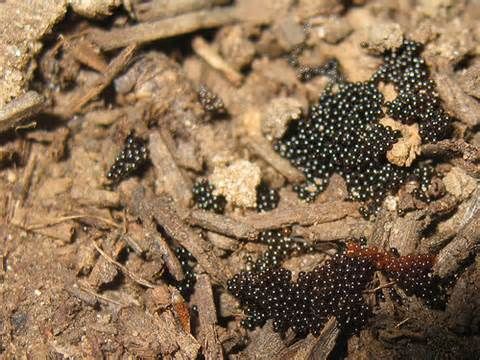If You See These Eggs In Your Backyard, Burn Them Immediately: A Comprehensive Guide to Identifying and Managing Tick Eggs
Encountering tick eggs in your backyard is indeed a serious concern, as ticks are vectors for diseases such as Lyme disease and Rocky Mountain Spotted Fever. Understanding how to identify, handle, and prevent tick eggs from hatching is essential to keeping your yard and loved ones safe.
Identification of Tick Eggs
Tick eggs are extremely small, about the size of a poppy seed (0.5 mm), and are often laid in clusters. Characteristics to look for include:
- Shape: Oval or pear-shaped.
- Color: Varies from translucent to pale yellow, light brown, or slightly whitish.
- Texture: Smooth and glossy.
- Location: They are usually found in hidden, moist areas close to the ground, such as leaf litter, tall grass, or under debris.
Different tick species may have slightly varied egg colors, but all eggs are typically laid in sheltered outdoor areas where conditions are favorable for development.
The Dangers of Tick Eggs
Tick eggs pose a risk because they hatch into larvae that can spread diseases like:
- Lyme disease (caused by Borrelia burgdorferi bacteria)
- Rocky Mountain Spotted Fever
- Ehrlichiosis
- Babesiosis
Once hatched, these larvae can find hosts, including humans or pets, making tick eggs a primary concern in the early stages of infestation.
Removal and Disposal of Tick Eggs
Professional Assistance: If you find tick eggs, it’s best to consult a pest control professional for identification and removal guidance. This ensures the infestation is handled correctly and thoroughly.
Handling Tick Eggs:
- Protective Gear: Always wear gloves when handling tick eggs to avoid contact.
- Disposal: You can remove tick eggs using a vacuum or by carefully scooping them into a sealed bag. Dispose of the eggs by placing them in alcohol, sealing them tightly, or flushing them down the toilet to prevent hatching.
- Avoid Crushing: Do not crush tick eggs as this may spread pathogens or cause exposure to harmful bacteria.
Natural Solutions to Control Ticks
You can reduce the tick population in your yard without relying on chemicals by using natural solutions. Here are a few effective methods:
- Essential Oils: Oils like cedarwood, neem, eucalyptus, citronella, peppermint, rosemary, and clove have been found to repel or kill ticks. Dilute the oils in water and spray them around the yard, especially in tick-prone areas.
- Diatomaceous Earth (DE): Use food-grade diatomaceous earth, a natural powder that kills ticks by dehydrating them. Sprinkle DE around areas where ticks may be present, such as tall grass, leaf piles, or woodpiles.
Preventive Measures to Reduce Tick Populations in Your Yard
- Remove Deer-Attracting Plants: Avoid plants like hostas and tulips, which attract deer, as deer often carry ticks.
- Introduce Tick-Repelling Plants: Plant herbs such as mint, rosemary, and garlic, or flowers like chrysanthemums, which are known to repel ticks.
- Lawn Maintenance: Keep your grass short and eliminate heavy brush, as ticks thrive in dense vegetation. Regular mowing reduces potential habitats for ticks.
- Manage Debris and Woodpiles: Ticks lay eggs in dark, moist places. Ensure that woodpiles are elevated and stored away from your home. Clean up leaf litter, tall grass, and garden debris.
- Discourage Rodents: Maintain stone walls and avoid bird feeders that may attract rodents, as small mammals are common hosts for ticks.
- Create a Barrier: Use gravel or mulch around your yard to create a physical barrier that ticks are less likely to cross.
- Use Tick Tubes: These products contain treated cotton that mice use for nesting. The cotton contains an insecticide that kills ticks on rodents, reducing their population.
- Natural Repellents: Apply essential oil sprays or diatomaceous earth regularly to areas where ticks are likely to live.
- Hardscaping: Reduce grassy areas by adding patios, gravel paths, or other hardscaping features that ticks cannot inhabit.
- Insecticides: If necessary, use insecticides carefully. Options include natural products like cedar oil or more conventional treatments like synthetic pyrethroids, but always follow the manufacturer’s instructions.
Staying Vigilant
To effectively manage ticks and prevent them from becoming a major health risk:
- Regularly check your yard for tick eggs or ticks.
- Follow preventive measures consistently.
- Seek professional advice when dealing with a severe infestation.
By being proactive with identification, removal, and prevention, you can protect your family and pets from the dangers associated with ticks and their eggs.
